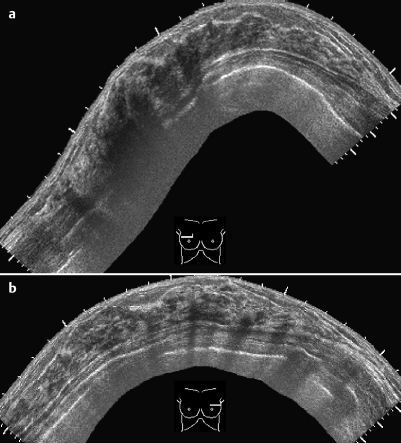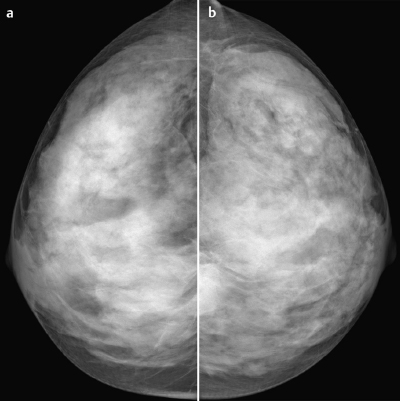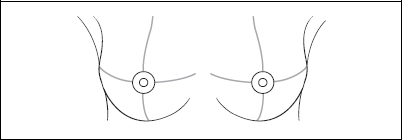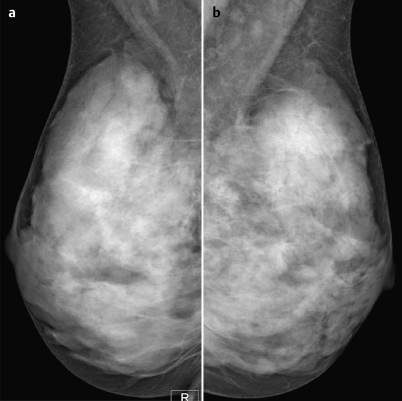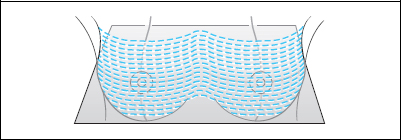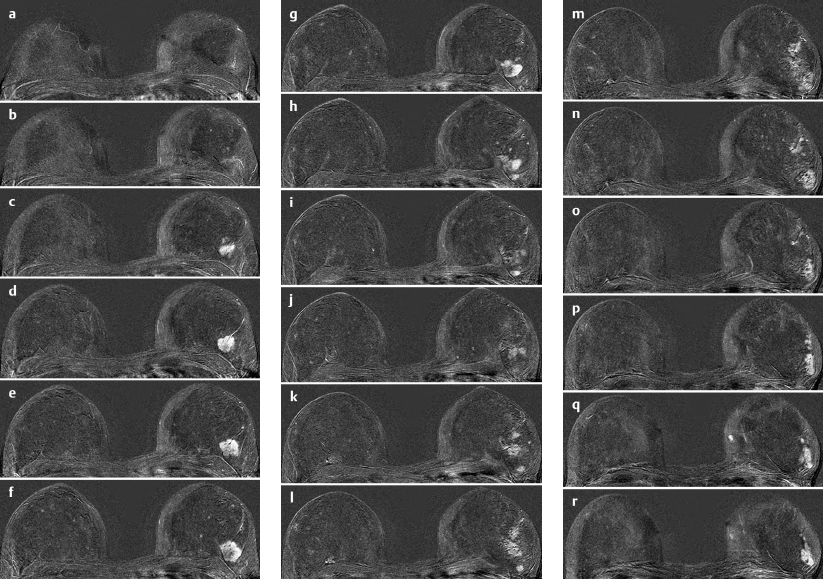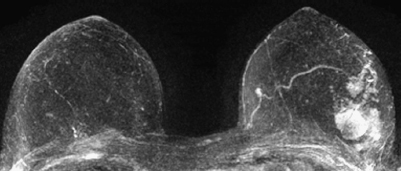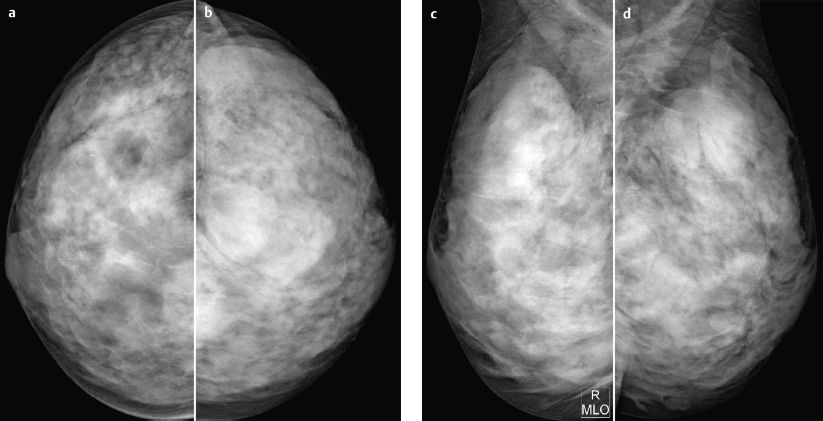MRM score | Finding | Points |
Shape | irregular | 1 |
Border | ill-defined | 1 |
CM Distribution | rim sign | 2 |
Initial Signal Intensity Increase | strong | 2 |
Post-initial Signal Intensity Character | wash out | 2 |
MRI score (points) |
| 8 |
MRI BI-RADS |
| 5 |
 Preliminary Diagnosis
Preliminary Diagnosis
Extended invasive carcinoma. No differential Diagnosis.
Clinical Findings | right 2 | left 2 |
Ultrasound | right | left 2 |
Mammography | right 1 | left 1 |
MR Mammography | right 1 | left 5 |
BI-RADS Total | right 1 | left 5 |
Procedure
Histopathological evaluation of the extensive enhancing areas in the lateral parts of the left breast with MR-guided core biopsy, because ultrasound did not provide clearly corresponding data. MR-guided vacuum biopsy in the upper outer quadrant of the left breast (11 gauge, 12 specimens). Additionally, MR-guided core biopsy in the lower outer quadrant of the left breast (16G, 8 specimens spaced 1 cm apart) to verify multicentricity.
Histopathology (all specimens)
Tubular breast cancer grade 1 -2.
Fig. 23.6a-d Digital mammography in 2 views from screening examination a year earlier, with identical findings.
Histology
8 cm tubular cancer of the left breast.
TC pT3 pN0, G2.
Stay updated, free articles. Join our Telegram channel

Full access? Get Clinical Tree


